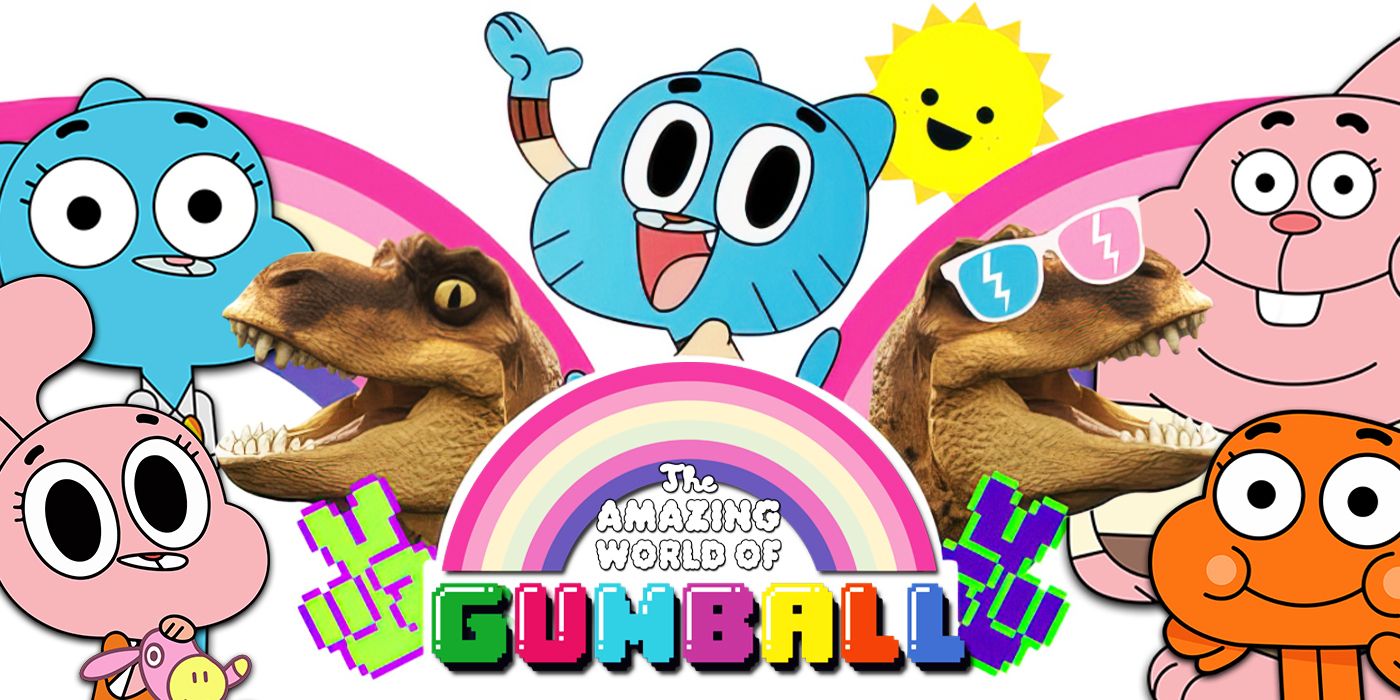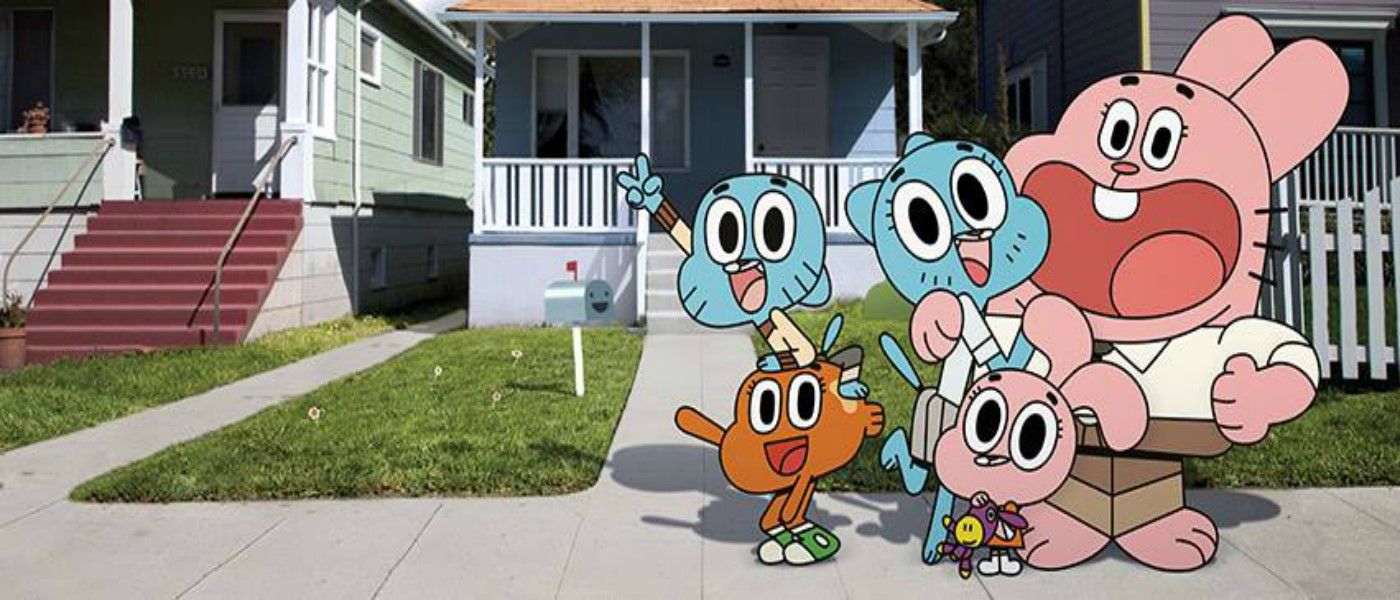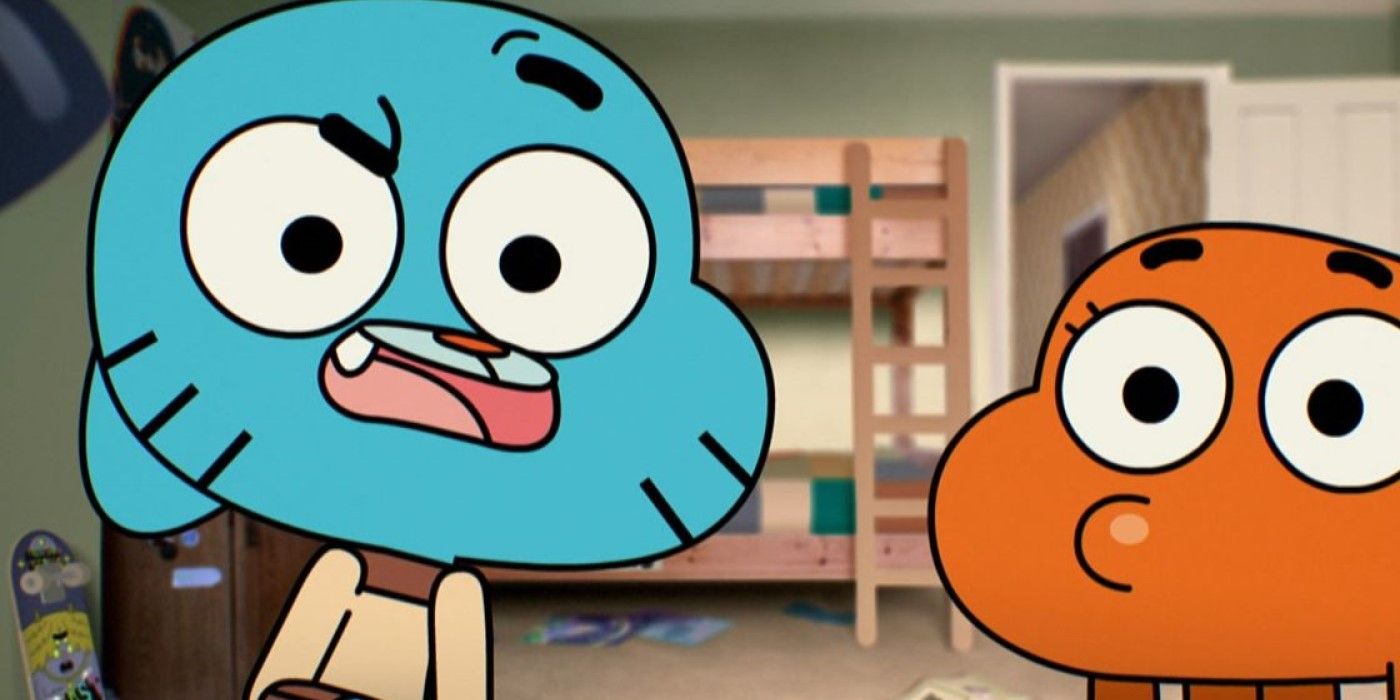From its first episode, which aired on Cartoon Network in 2011, to its final special episodes in 2019, The Amazing World of Gumball has been watched by children and adults alike for a little over a decade. This show consistently provides a unique and memorable entertainment experience for all ages. Despite being aired at the same time as shows such as Adventure Time and Regular Show, The Amazing World of Gumball has become instantly recognizable by its refusal to stick to one specific animation style. Its animators use everything from traditional 2D-animation to 3D-Animation, to even live-action at times to make this world feel pumped full of creativity and uniqueness. It wouldn't be uncommon to see characters like Gumball (voiced originally by Logan Grove) and Darwin (voiced originally by Kwesi Boakye) interacting with students literally made out of paper, or perhaps a large, 3D-animated T-Rex student instead. The show's other 2D-animated characters even have wildly different styles, such as Alan the balloon (voiced primarily by Hugo Harrison) or Carmen the cactus (voiced primarily by Alix Wilton Regan). The only show in recent memory that has been willing to attempt such a distinct blend of styles would be that of Uncle Grandpa. While that show, though, drives its humor from being unpredictable and random, The Amazing World of Gumball sources its comedy from real life.
While it is true that the visuals of the show are commendable and recognizable on their own, the writing is where one can really tell that the show knows its audience well. This is because the show uses a lot of meta humor. To elaborate, the writers are very literate when it comes to cartoon tropes and popular media, and they use those bits of media to craft their own form of humor. For example, in Season 2's episode "The Sweater" Gumball and Darwin find themselves in a situation very reminiscent of older films and shows in which they must fight a rival group in order to earn their respect. Instead of the two playing out the scenario in the way that one might expect them to, training, working hard, and overcoming all odds via the power of friendship, the two boys instead attempt to have nothing to do with the ongoing plot. The entire humor of the episode is that the plot moves along exactly how one would expect it to, but the protagonists have absolutely no interest in taking part in the situation. The writers use what knowledge they have about a narrative trope and from it create a new scenario for viewers to enjoy. This is referred to as "parody" and it is a big part of how meta humor works for the show.
Parody is used by the writers in a plethora of ways, going so far as to parody a show that would appeal much more to older audiences than to newer ones. In Season 6, there is an episode titled "The Lady" which is more or less a direct parody of The Golden Girls. The episode revolves around the boys' father Richard Watterson (Dan Russel) pretending to be an elderly woman by the name of Samantha (Lorelei King). Samantha shares a striking resemblance towards The Golden Girls' Blanche (Rue McClanahan) as does the rest of her group of friends. The episode is littered with references to the classic sitcom. By creating an episode around this premise, the writers found a way to take an already popular sitcom and parody it in such a way that both younger and older audiences would enjoy it.
Along with using parody in their writing, The Amazing World of Gumball also combines both visual and narrative formats to create distinct and memorable episodes. An example of this comes from an episode in Season 3 titled "The Money." The premise of this episode is that the Watterson family is broke, and as a result they have their belongings repossessed after choosing to not sponsor a brand and "selling out." However, the repossession doesn't stop with just their physical possessions. Slowly, the Wattersons find themselves being drained of color and animation as it is revealed that "when you don't have money, your whole world falls apart." Not only is this a clever method for the writers to critique the capitalist environment our societies are built upon, but it is also another method for them to create a meta situation for the family to tackle. They are constantly aware of the fact that their world is cartoon in nature, and thus the glitches and loss of details is not something that is inherently world-shattering for them, but rather just another obstacle for them to overcome. As scenes progress, things get even more meta, eventually getting to the point that instead of an animated setting, the family is presented on storyboard notes. This is played quite literally, with the Wattersons being completely aware that these changes are occurring. Eventually they reach the burger place after becoming literal doodles on sticky notes. As the family signs the contract, they regain their original forms.
The reason that this meta humor works so well is because newer generations are growing up with easy access to the internet. As such, they are often exposed to a variety of humorous posts called "memes" named after the term "meme" which was invented by Richard Dawkins in 1976. The term "meme" is defined by Merriam-Webster as, "An idea, behavior, style, or usage that spreads from one person to another in a culture." In the context of Internet memes, it is a method of stating an idea by using a pre-existing idea as the foundation. For example, a meme might show popular Muppet character Kermit the Frog sipping tea with text giving a sassy statement followed by "but that's none of my business." One could substitute any sassy statement into the meme format, and it would still work because culturally everyone understands the tone of the meme immediately.
Memes are quickly becoming the type of humor to which younger generations are constantly exposed. In a rapidly evolving internet culture, memes are being used more and more for people to interact with one another on platforms such as Reddit. This relates to The Amazing World of Gumball because the show is not afraid to use modern culture to shape its writing, and memes are just another form of that culture being shaped into new ways. The show's use of parodies falls under the definition of "meme" and as such it takes full advantage of the new generations' exposure to memes to formulate anything from one-off bits to entire episodes that can be enjoyed and understood without much context. Those who have never seen The Golden Girls will likely still find the parody episode above funny, but those who have seen the classic sit-com will get much more enjoyment out of it because they understand the cultural background that serves as the basis for many of its jokes. The show thus makes use of our rapidly growing understanding of how memes work to add a new layer of comedy into its situational humor.
Even though The Amazing World of Gumball the series has officially concluded, a new movie is set to be released in 2022 on HBO Max. The Amazing World of Gumball was a show that was ahead of the curve regarding adopting meme-like animation, and it served as yet another example of the motto, "The only way to survive is to adapt." The writers used this rapidly growing form of comedy to create a show that knew exactly who its audience was and what made them laugh for over ten years. Hopefully the new movie will follow in these footsteps.



